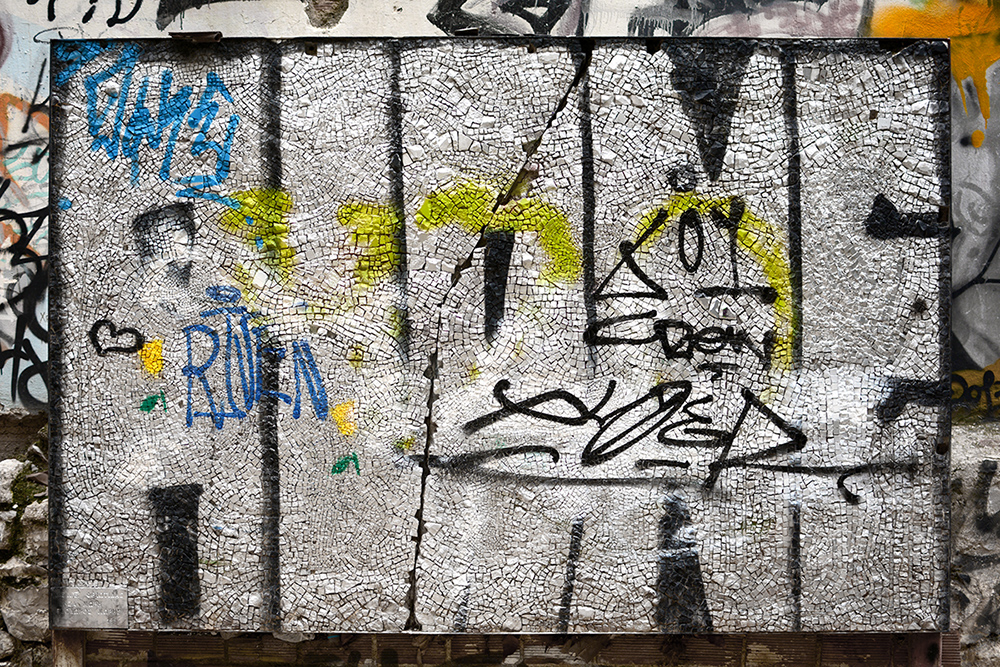Alone
In 1985, a few years after they settled in my hometown, Lamia, my parents participated in a GLSL program (General Secretariat for Lifelong Learning). The program included the delivery of mosaic lessons to primary school children. It also involved the production of a mosaic project in collaboration with the children who participated in the program. Part of the whole project was the mosaic to be permanently installed in a public space. The work was finally installed in a municipal playground in the city center, in a plot that was expropriated due to archaeological finds. As a child, my visits to the specific playground were not regular. I can confidently say that I had been there about five times the most in my whole life. For this reason, I could only vaguely recall the subject and the composition of the mosaic. I can somewhat remember its earthy colours of pink and yellow marble. I can roughly bring to mind its general style, a fusion of pre-cubism, socialist realism and children’s book illustration.
My parents studied mosaic in Ravenna, where they met each other and fell in love. My personal relation to the studio they still maintain in Lamia was quite problematic from the time I can remember myself and till I left my hometown to study. I was insistently reacting to my involvement in their professional activity and my systematic help in the studio at that time. This turned me passionately towards computer science during my school years, planning to study programming and network security. In this scientific field I assumed that I could find my distance from the manual practice and the aesthetic range of applications of mosaic and craft in general. Nevertheless, I eventually studied visual arts.
I decided to pay a visit at the playground a hot afternoon last August, when I happened to be in town. The plot was surrounded by multi-storey apartment buildings. From the first minute of my arrival I got conquered by a thin feeling of disappointment. After scanning with my eyes the few square meters of the space that were not covered with vegetation, obsolete recreational equipment, benches and dried leaves, I concluded that my parents’ mosaic had been removed from the site. For some moments my gaze wandered randomly on the blind walls of the surrounding buildings that were on their larger part covered with rough, sprawling graffities. Apart from a poorly designed sign that read “Lamia”, most of the graffities (or at least the ones I could actually decipher) were in fact the tag of a solely guy that signed with the alias “Alone”. Alone’s graffities ranged typologically from sketchy “tags” to crappy “bombs” that almost overlapped each other on the walls of the west side of the playground. Among them, a slightly more sophisticated graffiti, around three by two meters size, was standing in a distance from the wall, on what it looked like a mismatched brick pedestal. Like the rest of the graffities, it featured the signature “Alone” with bold capital letters. The whole background was painted with silver spray paint, while the letters were outlined in black. Yellow and green stencilled flowers were sprayed over the silver surface, most likely in retrospect, by another graffiti writer. The whole composition was completed by a small sprayed heart and a couple of additional tags, painted in blue.
As I approached slowly towards the “masterpiece” of Alone’s unlawful art, I immediately understood why the whole graffiti caused me from the beginning an awkward but elusive uncanny feeling: at five meters distance it was already apparent that Alone’s thick silver spray paint had found as a landing surface the very mosaic for which I visited the playground in the first place.
